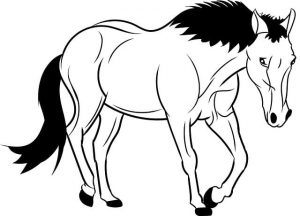The TrustATrader Festival Plate Handicap Chase was inugurated, as the Mildmay of Flete Handicap Chase, in 1951, in memory of Anthony Bingham Mildmay, Second Baron Mildmay of Flete, an influential amateur jockey who drowned off the Devon coast the previous May. The race has had numerous sponsors down the years, with the online trade directory taking over in 2024, and is nowadays a ‘Premier Handicap’, having been reclassified as such by the British Horseracing Authority (BHA) in 2023.
The TrustATrader Festival Plate Handicap Chase is run over an extended two-and-a-half miles on the New Course at Cheltenham, where it is currently scheduled as the penultimate race on the third day of the Cheltenham Festival in March. Open to horses aged five years and upwards, worth £150,000 in total prize money and with a safety limit of 24, the race is a typical Festival handicap insofar as it is almost invariably fiercely competitive. That said, at the time of writing, four of the last 10 renewals have been won by the outright favourite, but the successful market leaders have been balanced by winners at 22/1, 20/1, 16/1 and 14/1 in the same period.
Nicky Henderson, who saddled The Tsarevich (1985, 1986) to back-to-back victories, plus Liberthine (2005) and Non So (2006) is jointly the leading trainer in the history of the TrustATrader Festival Plate Handicap Chase, alongside the later Bobby Renton and Martin Pipe, who retired from the training ranks in 2006. The late Fred Winter, who rode Slender (1951), Sy Oui (1953) and Caesar’s Helm (1958), remains the leading jockey. Notable winners in recent years include Road To Respect (2017) and The Storyteller (2018) , who went on the rack up five Grade 1 wins between them.

 Salisbury racecourse is a flat horse racing venue located in Salisbury, Wiltshire. The race track hosts a total of 15 race meetings annually, beginning from the end of April all through to early October. It hosts almost all types of races, including handicaps. The racecourse is located only about 5km from Salisbury, making it a convenient horse racing venue. It has a great view of Salisbury Cathedral, and is engulfed with a peaceful and stunning atmosphere, thus a preferred horse racing venue for many racegoers in Britain when they’re not playing
Salisbury racecourse is a flat horse racing venue located in Salisbury, Wiltshire. The race track hosts a total of 15 race meetings annually, beginning from the end of April all through to early October. It hosts almost all types of races, including handicaps. The racecourse is located only about 5km from Salisbury, making it a convenient horse racing venue. It has a great view of Salisbury Cathedral, and is engulfed with a peaceful and stunning atmosphere, thus a preferred horse racing venue for many racegoers in Britain when they’re not playing  When Steve Cauthen arrived in Britain as a lank 18-year-old in the spring of 1979, he had already achieved more than most jockeys can hope for in a lifetime. In his first full season, 1977, he had ridden 487 winners in America and become the first jockey to win $6 million in calendar year. The following year he won the American Triple Crown – the Kentucky Derby, the Preakness Stakes and the Belmont Stakes – on Affirmed and was named Sportsman of the Year by Sports Illustrated.
When Steve Cauthen arrived in Britain as a lank 18-year-old in the spring of 1979, he had already achieved more than most jockeys can hope for in a lifetime. In his first full season, 1977, he had ridden 487 winners in America and become the first jockey to win $6 million in calendar year. The following year he won the American Triple Crown – the Kentucky Derby, the Preakness Stakes and the Belmont Stakes – on Affirmed and was named Sportsman of the Year by Sports Illustrated. Introduction
Introduction